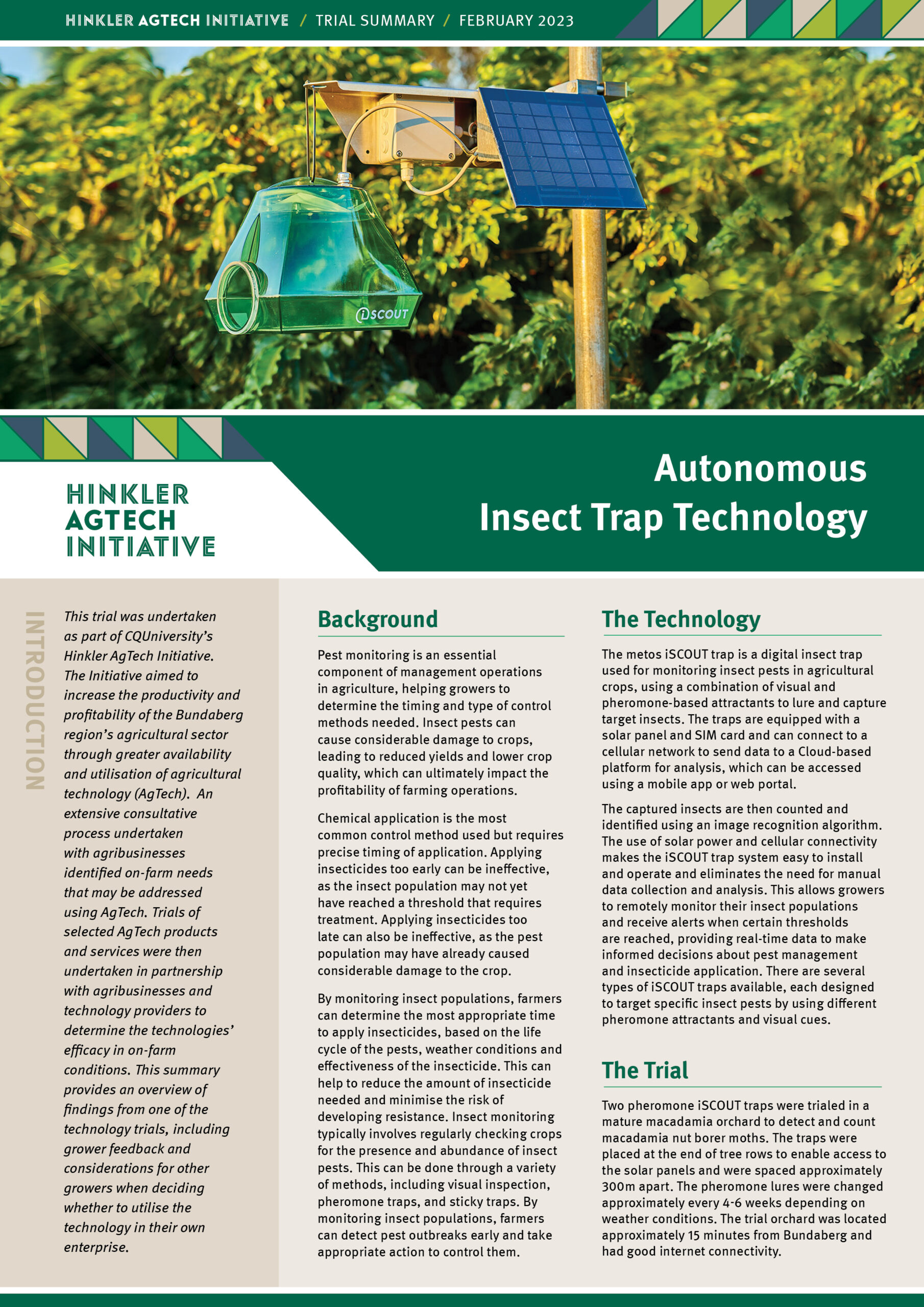Autonomous Insect Trap Technology
Summary
About the Technology
The metos iSCOUT trap is a digital insect trap used for monitoring insect pests in agricultural crops, using a combination of visual and pheromone-based attractants to lure and capture target insects. The traps are equipped with a solar panel and SIM card and can connect to a cellular network to send data to a Cloud-based platform for analysis, which can be accessed using a mobile app or web portal.
The Trial
Two pheromone iSCOUT traps were trialed in a mature macadamia orchard to detect and count macadamia nut borer moths. The traps were placed at the end of tree rows to enable access to the solar panels and were spaced approximately 300m apart. The pheromone lures were changed approximately every 4-6 weeks depending on weather conditions. The trial orchard was located approximately 15 minutes from Bundaberg and had good internet connectivity.
Overview
This case study provides an overview of findings from the technology trials including:
- Background
- What the technology is
- How the trial was done
- Results
- Cost/benefit analysis
- Grower feedback
- Additional considerations that should be taken into account when deciding whether to utilise the technology
← Back to HAI Case Studies page
Presentation of this case study is for information purposes only. It does not constitute a commercial endorsement by the stakeholders of the Bundaberg Agtech Hub.
Trials conducted by Hinkler AgTech Initiative
The CQUniversity Hinkler AgTech Initiative was funded through the Hinkler Regional Deal. The Hinkler Regional Deal is a collaboration between the Australian Government, Bundaberg Regional Council and Fraser Coast Regional Council.
CQUniversity will not be liable for any damage arising directly or indirectly from reliance on information obtained from this document. It is provided in good faith without express or implied warranty. * All published costs and other details are current as of February 2023.

